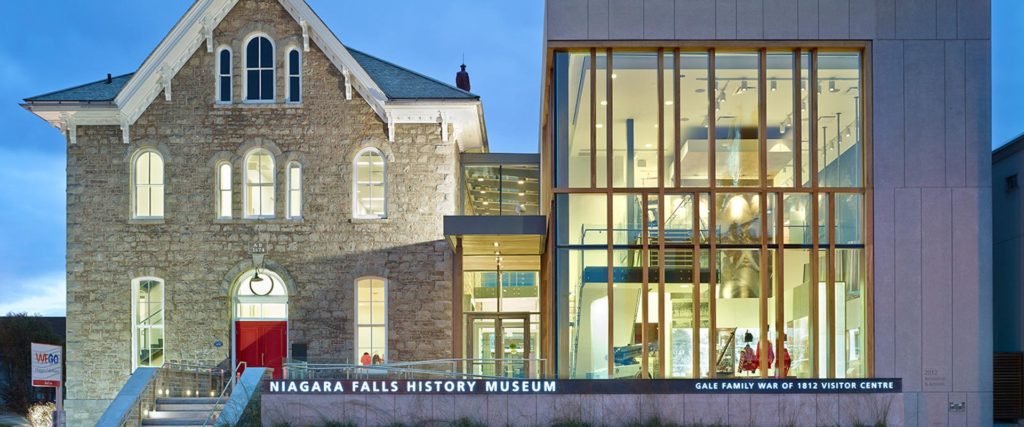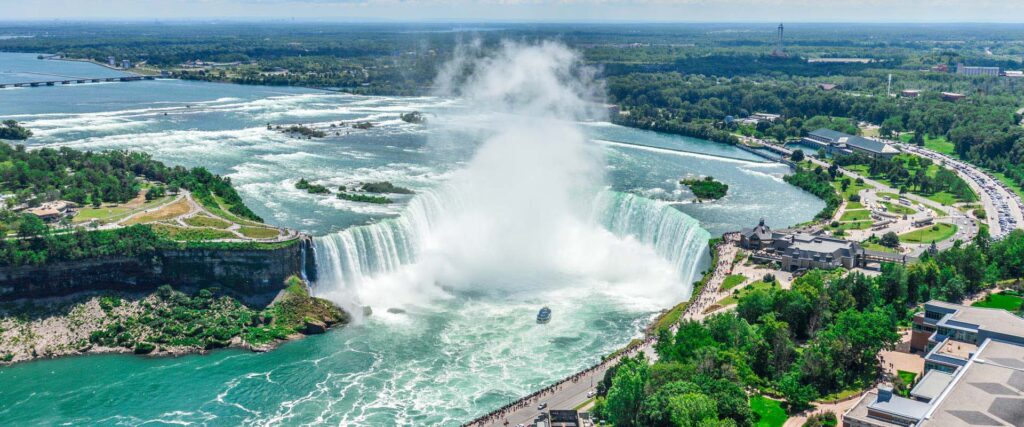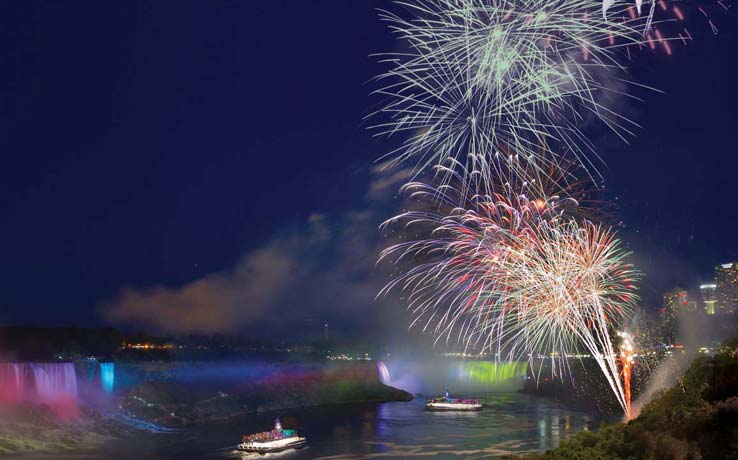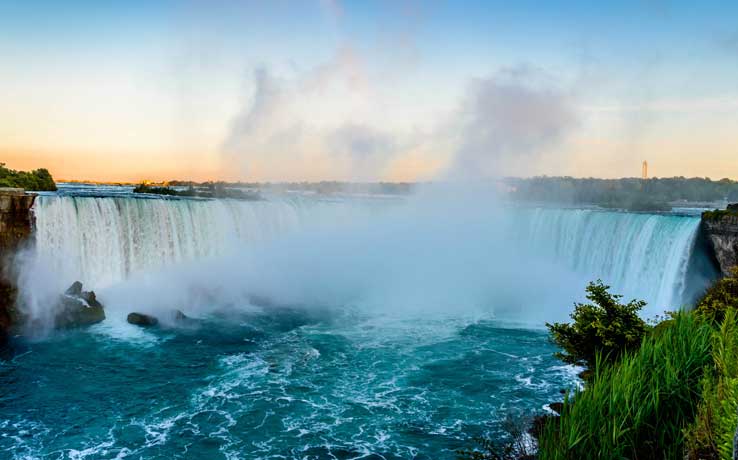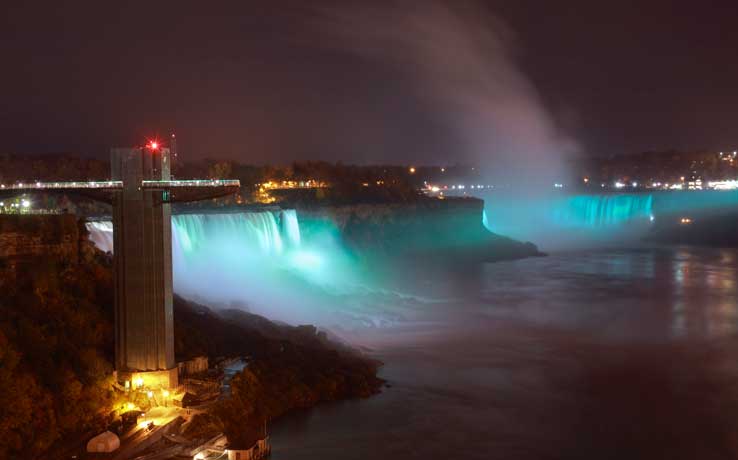.
Know About The History of Niagara Falls
One look at Niagara Falls, and you will be overwhelmed with awe. Niagara Falls is a place where one can experience power, mystery, beauty in the most tangible form. The three magnificent waterfalls produce more than six million cubic feet of water every minute, making this natural wonder incredible and even more stunning to behold! Niagara Falls are not only a natural wonder but also have a rich heritage and interesting facts. From daredevils who have attempted to take on the mighty falls to those that helped design modern-day electricity supplies such as Nikola Tesla. All of these make the list of contributions in one way or another! The history of Niagara Falls is an ancient phenomenon that has been around for more than 12,000 years. This is due to the formation of these falls when large amounts of water were released from melting ice during the Ice Age. It drained into a river that would eventually lead out onto the Niagara River as we know it today.
The Discovery of Niagara Falls
The Niagara region is a place of mystery and wonder that has been shrouded in secrecy for centuries. The first people to behold its power was likely Native Americans. They discovered a stream far more potent than they had ever seen before. Father Louis Hennepin was awe-struck during his journey into uncharted territory when he stumbled upon these falls way back in 1678. When he returned to France, Hennepin published an account of his travels in “A New Discovery.” The book brought Niagara Falls to the attention of the western world. Even today, you can feel his excitement through every line describing them as never before seen by anyone else at such close range.
The Niagara Falls honeymoon tradition started with Napoleon Bonaparte’s younger brother, Jerome. He enjoyed a romantic trip to Canada in 1804. After that, Niagara Falls came to be known as a honeymoon destination.
The rail system development in 1800 allowed more people access to this beauty spot, which led them to become fascinated by how powerful it is because they had never seen anything like that before then.
The Formation of Niagara Falls
Geologically speaking, Niagara Falls is relatively young. Niagara Falls is an excellent example of how nature can be both beautiful and awe-inspiring. The waterfall was formed 12,000 years ago when a powerful storm dropped water over the edge of what is now known as “the escarpment.”
The formation of Niagara Falls was a slow process that continues today. The annual freezing and thawing of the Niagara River wear away at the rocks under the surface. Still, this erosion has lessened with modern influences because remedial work has been done to preserve them for future generations!

Historical Attractions at Niagara Falls
The Niagara Falls region is rich in heritage and has interesting facts. From daredevils who have attempted to take on the mighty falls, such as Paulus Snoek, to inventors like Nikola Tesla – famous for his contributions with alternating current electricity supply systems that modernized our world forever more than 100 years ago!
The War of 1812
The War of 1812 was a turning point in Niagara Falls history when the fledgling United States army fought British Loyalists for new lands that would become Canada. Sites like historical battlefields, museums, and military re-creations are memorable journeys into our pastime!
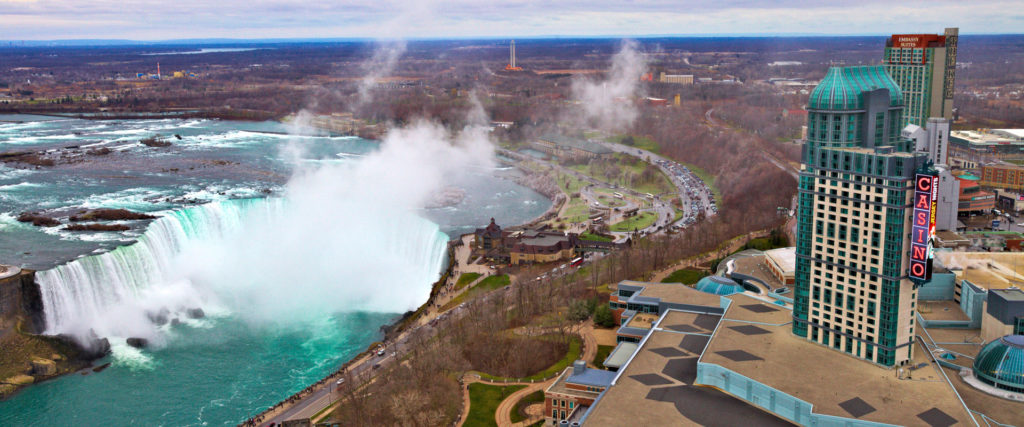
The past lives on at Old Fort Erie. Authentically dressed guides in the 1812 period costume re-create life for visitors, including daily musket demonstrations and the annual Siege of Old Fort Erie Re-enactment. The site was also an entry point from which freedom-seeking black slaves escaping persecution could enter Canada; it’s known today as “The Crossing” – one endpoint along Freedom Trail part of the Underground Railroad.
It doesn’t matter if you have a tour schedule or not; just stop by when you travel to Niagara Falls to look through this historic landmark!
There are so many stops in this area, and it’s hard to choose just one! A great option is Brock’s Monument, which pays tribute to General Sir Isaac Brock, who lost his life at Queenston Heights during the 1812 war.
The Power of the Falls
The potential power of Niagara Falls attracted industrialists who were looking to harness its force using water wheels. By 1895, they had set up a large-scale hydroelectric generating station at the foot site by utilizing direct current (DC). It could only transmit electricity 100 yards before it was lost as the heat generated against the rocks at the ground level was due to low voltage levels. It meant that most homes and buildings would never have been able to be powered solely through an electric grid run from these cathedrals!
In 1896, the famous electrical engineer Nikola Tesla proved to transmit electricity from Niagara Falls to Buffalo using his new alternating current (AC) induction motor. That marked a long-distance commercial use for this system which is still around today! Though others had invented it before him, Schoellkopf Power Station was where Thomas Edison lit up the first-ever AC-powered light bulb on July 25th, 1879, in New Jersey. It made him one of many great inventors associated with our country’s history.

Hydroelectricity is one of Niagara Falls’ most critical products, with power plants on American and Canadian sides. They have enough capacity to produce up to 2 million kilowatts in electricity!
Under an international treaty, the nighttime flow is reduced to generate more energy with less environmental harm from its natural beauty remaining untouched. At any given moment, two hydroelectric facilities are operating. The Robert Moses plant has 1GW worth of installed capacity. Democratizing access by offering lower prices than other forms, such as coal-fired generation where you pay about £5k per megawatt-hour (MWh).
The Niagara Falls History Museum
The museum is where visitors can explore the history that changed a nation with authentic artifacts, images, and videos designed to deliver total exposure to historical events in this region. The Niagara Falls Gallery provides an opportunity for those who have never seen these iconic falls up close. You can also experience all aspects of what it takes to make them so powerful. The geological creation right down through daring daredevils like Ewan McGregor or David Hemmings, who tested out just how ferocious nature was under pressure!
The museum is located within steps of the Drummond Hill Cemetery, a focal point for an important battle in our history. A visit there will give you insight into how it impacted people and society during this period. With nations at war on issues such as trade routes or territory disputes–it can’t be any easier than that!

The Gale Family War of 1812 Gallery provides visitors with information on all kinds of wars through different perspectives, including those who have served abroad. Children left fatherless, and families of soldiers got apart because of one or another member’s heroical death while serving overseas.
The museum’s new and exciting expansion provides a showcase of the unique history of Niagara Falls. The recent renovation was designed by Toronto-based firm Moryama & Teshima that has three galleries compelling stories about our famous city with hands-on exhibits!
